Ancient Sources of the Torah
by Dan Severson
It was a long held belief that Moses write the first five books of the Hebrew Bible, also known as the Torah (law and wisdom) or the Pentateuch (meaning “five books” in Greek). However, in 19th century Germany scholars began a detailed literary study of each of these books. They discovered that the formation of the Pentateuch took place over many years and that the books as we now have them are a combination of documents. There are at least four sources. This is clear based on the style of language, the different names used for God(Yahweh, Elohim, el shadday), and the particular way the relationship with God is described. Additionally, different geographical locations are referenced in different parts of Genesis, suggesting different authors and time and place of origin.
Genesis (meaning “the beginning”) starts out with a number of stories categorized as “prehistory”. The purpose of these stories is manifold, but basically they are meant to reveal the nature of the god of Hebrews. These stories consist of the first eleven chapters of Genesis. The long remainder of Genesis consists of the stories of the Patriarchs – Abraham, Isaac, Jacob, and Joseph. All of these stories are themed to consider how God challenges people to come to an authentic faith and trust in God’s promises.
The second book, Exodus, contains the story of Moses and his leadership in liberating the Hebrew slaves from Egyptian slavery. After freeing the Hebrew slaves, God led them through the wilderness of the Sinai desert – another story of how God challenges people to live by faith in God’s promises. When they reach Mount Sinai, Moses climbs the mountain in order to receive the covenant stipulations that would govern God’s relationship with his people. Unfortunately, Moses was delayed and they people became so anxious and afraid that they came to the conclusion that Moses was not coming back. This caused a lapse in their faith and a search for another god to worship. Moses brother Aaron therefore collected all their gold jewelry and formed it into a golden calf. Ultimately, this resulted in this generation being barred from entering the Promised Land. It would be the generation of their children who would cross the Jordan River into Canaan. The book ends with a description of the tabernacle – the tent of meeting with God.
Leviticus is the third book of the Pentateuch. This word is Greek and Latin meaning “the book of the Levites”, the tribe from which the priests came. Some traditions suggest that this group descended from Moses’ brother Aaron who was the first priest. Leviticus claims to contain the statutes, ordinances, and laws that God gives to Israel through Moses. As God’s chosen people, they were to live differently than their neighbors. Most of these laws were received by Moses in the tabernacle. This book is divided into two major sections. The first (chapters 1-16) contains descriptions of offerings, rituals, laws, and rites. The second section, thought to be older in origin, contains what is called “The Holiness Code” and may date back to 1000 B.C.E.
Numbers begins by organizing the people by counting those who can serve as soldiers to defend the people. Mostly Numbers is a collection of stories about the people as they move from place to place. Many familiar stories are contained in Numbers, such as God providing mana and quails for food when they were afraid of starvation. Unlike Exodus. which can be supported by historical evidence that the Egyptians enslaved foreign peoples to build their monuments and temples, there is no independent verification that the events in Numbers even happened.
Deuteronomy takes the form of a number of sermons given by Moses to the people of Israel. He speaks just before they are about to take possession of the Promised Land. Scribes and priests wrote the core of this book between 700 and 640 B.C.E. The Empire of the Assyrians were threatening the people of Judah and the authors wanted the people to stay obedient to the God even though they were in danger. This is a long and complicated book. In general, it calls for obedience to God’s law because of the unique relationship these people have with God. It describes the covenant relationship and calls for joyous worship that includes everyone. It seeks to make Israel a just and humane society, and promotes concern for the poor, including slaves, women, and foreigners. It offers a choice to everyone. Disobedience will lead to death, while obedience will lead to life. This is the end of the Torah.
It is important to note that some Jewish groups in the first century A.D. believed that the Torah was the only canonical group of books in the bible. However, all Jews believe that the laws and way of life taught in the Torah are of seminal important to Jewish identity.


